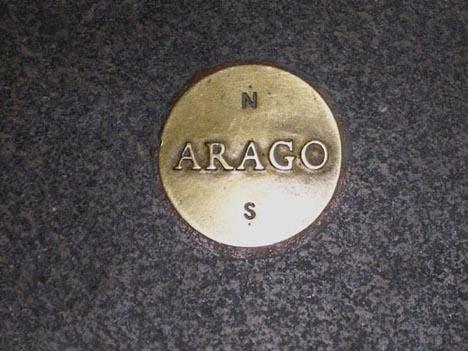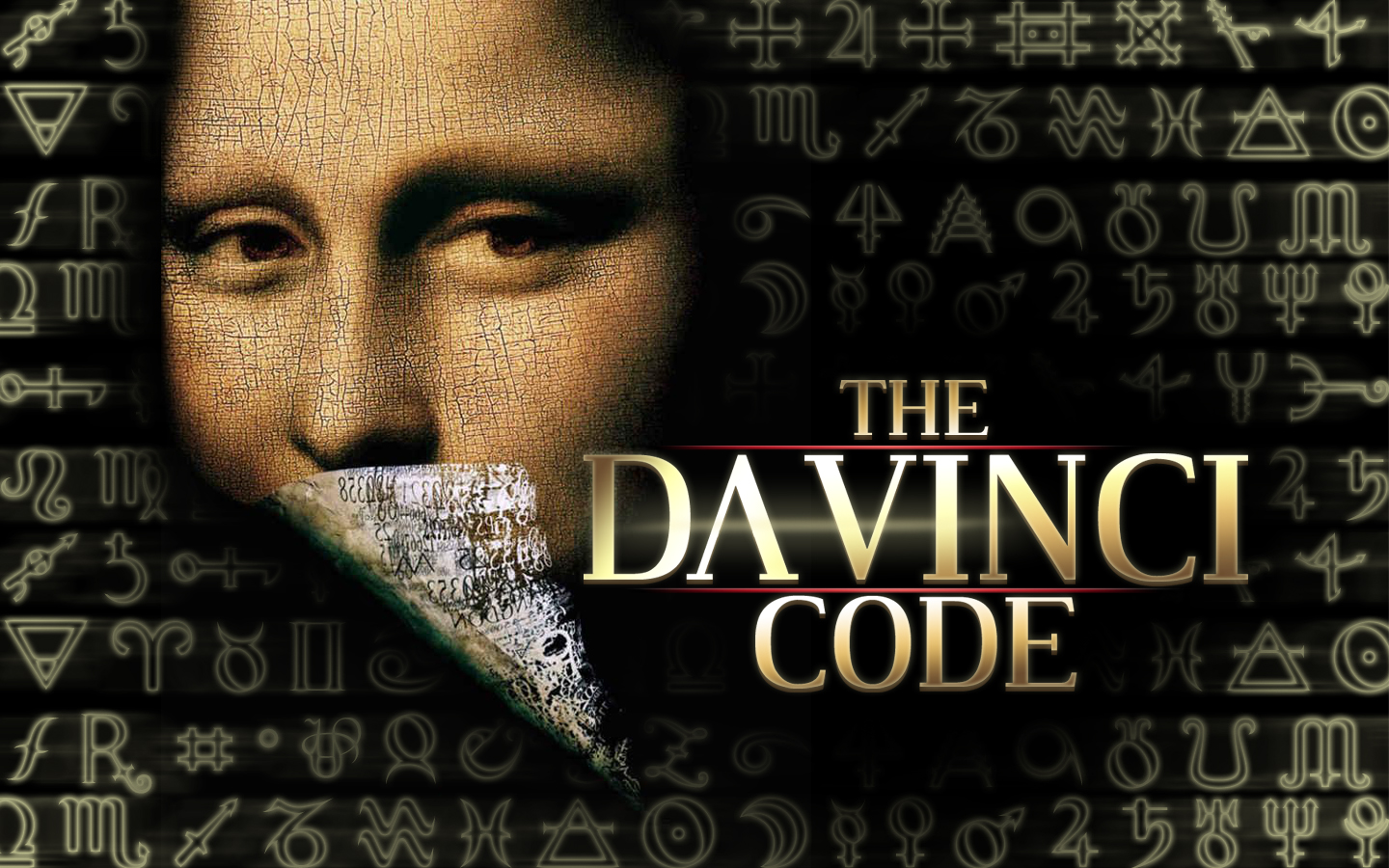The Paris Meridian is a meridian line running through Paris, once a rival to Greenwich as the prime meridian of the world. In 1666 Louis XIV authorised the building of an observatory to measure longitude, based on the calculations of longitude calculated earlier by French astronomer Abbé Jean Picard.

Frances Arago in the early 1800s recalculated the Paris Meridian with greater precision. He helped to standardize the length of the hour in France, based on the Paris Meridian. In 1884 (not 1888 as in the Da Vinci Code) the Greenwich Meridian was adopted as the international standard at the International Meridian Conference in Washington DC. France stuck to the Paris Meridian until the second decade of the twentieth century.
In 1994 Jan Dibbets was commissioned to set 135 bronze medalions into the ground along the Paris Meridian, as a tribute to the work of Frances Arago. Arago’s statue had been melted down during World War II.
There has been no shortage of conspiracy theories associated with the Paris Meridian.
Dan Brown, in the Da Vinci Code, calls the meridian the “Rose Line”, drawing connections with the Saint Sulpice church and the inverted pyramid of the Louvre. Brown overlooks the fact that there were several candidates for the prime meridian from early days. When Greenwich was adopted as the universal zero longitude it was in competition with Berlin, Cadiz, Copenhagen, Lisbon, Rio de Janeiro, Rome, St Petersburg, Stockholm, Tokyo and of course Paris. The adoption of Greenwich was probably linked with the British domination of the sea at the time.
The Royal Netherlands Embassy in Paris has an excellent page dedicated to Jan Dibbet’s Arago tribute, including the location of all the medallions. It’s in French – use the Google translation tool if you’re not sure of your French.
18th District
 18 avenue de la Porte de Montmartre,
18 avenue de la Porte de Montmartre,
in front of the public library (1)- corner of rue Rene Binet/
avenue de la Porte de Montmartre (1) - 45/47 avenue Junot (1)
- 15 rue S. Dereure(1)
- 3 and 10 avenue Junot (2)
- Mire du Nord, 1 avenue Junot,
in private court, limited access (1) - 79 rue Lepic (1)
9th district
- 21 boulevard de Clichy,
side pavement and on the street (2) - 5 rue Duperré (1)
- 69/71 rue Pigalle (2)
- 34 rue de Chateaudun,
interior court of the ministry for national Education (2) - 34 rue de Chateuadun (1)
- 18/16 and 9/11 Haussmann boulevard,
in front of the restaurant (2) - corner rue Taitbout, (in front of the brewery)
and 24 boulevard des Italiens (2)
2nd District
- 16 rue de Septembre 4 (1)
- 15 rue saint Augustin
1st District
- 24 rue de Richelieu (1)
- 9 rue de Montpensier (1)
- Royal Palace: peristyles of Montpensier and Chartres, gallery of nemours, passage under vault side places Colette and Colette place in front of the coffee (7)
- angle places Colette and Council of State, street holy Honore (1)
- place royal Palate, side street of Rivoli (1)
- rue de Rivoli, with the entry of the passage under vault (1)
- The Louvre, Richelieu wing: room of the French sculptures and in front of escalator (3)
- The Louvre, Napoleon court, behind the pyramid (5)
- The Louvre, Denon wing: room of Roman antiquities, staircase and corridor (3)
- Quai du Louvre, close to the entry of the Daru embassy (1)
- port du Louvre, not far from Pont des Arts (1)
6th district
- port des Saints-Peres (1)
- Conti quay, one on corner of the place of the Institute (2)
- place de’instuit, passage rue de Seine (1)
- 3 and 12 rue de Seine (4)
- corner rue de Seine/rue des Beaux-Arts (1)
- 152 and 125-127 Saint-Germain boulevard (2)
- 28 rue de Vaugirard, Senate side (1)
- Jardin de Luxembourg, on asphalted or cemented spaces (10)
- rue Auguste Compte, garden entry (1)
- front of the Observatory on pavement side garden (2)
- front corner of the Observatory/street Michelet (1)
- Marco Polo garden (3)
- front corner of the Observatory/street of Assas (1)
- place Camille Jullian (2)
- on ground full front corner. Denfert Rochereau/front of the Observatory, side Observatory (1)front of the Observatory (2)
14th district
- court of the Observatory of Paris (2)
- inside the Observatory (1)
- terrace and high garden, in the enclosure protected from the Observatory (7)
- Arago boulevard/place of the Island of Centre (6)
- 81 rue du fauborg Saint Jacques (1)
- place Saint Jacques (1)
- Montsouris park (9)
- Jourdan boulevard (2)
- University city, along axis of Canadian embassy to the Cambodian embassy (10)


Can a map of the positions of all the discs be produced?
The theory that Britains domination of the sea was cause for the Greenwich meridian adoption is false.
John Harrison produced the most accurate sea clock and was tested by Cpt James Cook who proved its accuracy .
Whats the link between Roseline(In Da Vinci Code) and the 135 bronze medallions layed into the ground along the Paris Meridian between the northern and southern limits of Paris